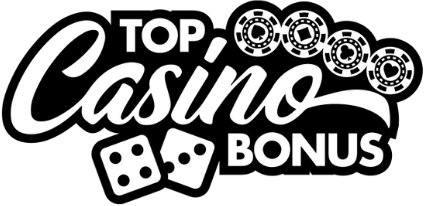Common mistakes in casino poker and how to avoid them
Most folks strolling into a brick-and-mortar casino think they know poker because they’ve watched a few YouTube videos or tried their luck online. Truth is, casino poker isn’t your Friday night home game, it’s a different beast entirely. You’re not just guessing what an opponent holds; you’re wrestling with house rules, pace of play, and unfamiliar territory that can trip up even the sharpest card sharks. Let’s pull back the curtain on the most common casino poker missteps and, more importantly, how to sidestep them like a seasoned grinder.
Table of contents
Misreading the casino poker environment
If you’re used to peer-to-peer tables or friendly games, the casino setting will throw you for a loop. Casino poker versions like Let It Ride or Three Card Poker aren’t about bluffing fellow players, they’re about beating the dealer or triggering specific payouts. It’s an entirely different game theory playground.
Understanding casino poker mechanics
Many rookies fail to distinguish between casino poker vs peer-to-peer poker. That lack of clarity leads to poor betting strategy and unrealistic expectations. In casino poker, you’re not practicing traditional hand-reading tactics. You’re exploiting fixed odds.
Know what the casino’s edge is on each variant. For instance, in Caribbean Stud Poker the house edge can spike beyond 5%. Your best weapon isn’t a poker face, it’s knowing when to fold trash starting hands immediately based on statistical probability, not gut feelings.
Getting seduced by side bets
I can’t count how many times I’ve watched players bleed chips chasing those flashy side pots. Side bets offer big allure, big payouts for rare combos, but they’re also loaded dice, mathematically speaking.
Evaluating payout structures
Before you toss chips at insurance or progressive jackpots, read the fine print. Some pay tables are stacked heavily in the casino’s favor. If the side bet pays 25:1 but only hits 0.5% of the time, that’s a sucker’s play. Use software simulations or charts to evaluate expected value.
If you’re a numbers nerd like me, get into payout-to-hit-ratio studies. One tool I like is calculating bet value per hundred hands using hand-frequency charts combined with edge percentages. That’ll open your eyes lightning fast.
Ignoring game flow and tempo
I once watched a sharp-dressed guy drop $2,000 in less than 15 minutes just because he didn’t adapt to the dealer’s tempo. Casino poker runs way faster than home games. You’re pressured to move, and if you’re unprepared, you’ll make speed-based errors.
Staying in control under pressure
Discipline’s your anchor here. Learn to pace yourself between hands. If you need time to think, place your hands on your chips without committing to a bet. That signals you’re considering but not ready, buying you valuable seconds legally.
Casino dealers have marching orders to keep hands moving. Don’t get rattled by their taps and nudges. Keep a strong internal rhythm so you’re playing your strategy, not theirs.
Using the wrong bankroll strategy
This one torpedoes more poker dreams than bad beats ever do. Too many players walk in underfunded, emotionally attached to their chips, or worse, chasing losses with a plastic card or mobile log-in already loaded.
Matching stakes to bankroll
If you don’t bring at least 20x the table minimum, you’re asking for trouble. In my world, a solid session starts at 30–40x. So, for a $25 minimum table, that’s $750–$1,000 just to absorb variance. Anything less is gambling, not grinding.
Also, rethink your payment methods. Use transparent options like Visa* for better traceability and faster dispute resolution or choose alternatives like Trustly Instabank for instant, low-fee transactions if you’re vaulting into digital play.
Relying too heavily on online experience
Sure, mobile poker platforms train your fingers, but they don’t toughen your instincts. I’ve watched online crushers crumble in live settings because they had no feel for sizing bets without chips showing values or reading opponents without avatars.
Adapting mobile habits to live tables
If your pocket experience is all screen and no skin, step into a real table cautiously. Practice chip handling, bet sizing, and reading table behavior. Combine those instincts with tools from top mobile online casinos to warm up your brain but realize: a real table’s got smells, sounds, and tension algorithms can’t replicate.
Mix practice styles. Run mobile simulations for volumes, but schedule live sessions to cultivate tempo and sensory awareness. It’s like training both eyes, you need depth perception.
Neglecting comparative edge opportunities
Casino poker offers specific mathematical frameworks, but rarely do folks benchmark them against other house games. Sometimes the smarter bet isn’t poker at all, it’s a game where strategy has greater impact than luck alone.
Understanding cross-game value
Smart players sometimes shift to games like blackjack when poker odds are icy or tables overrun with loose cannons. With perfect basic play, blackjack’s house edge is slashed to under 0.5%. You don’t get that kind of leverage in Three Card Poker or Ultimate Texas Hold’em.
Learn both systems. Then decide each session where your edge lives. Poker’s not always the sharpest sword in the case.
Final thoughts: precision over bravado
In casino poker, the veneer of swagger quickly peels back, exposing whether you have true command or just theatrics. You want to be the player who understands the rake’s impact per hand, who folds 2-6 offsuit every single time, and who watches dealer rotation patterns like a hawk. That’s mastery.
The noise around you doesn’t matter. Practice stillness at the table. Calculate honestly. Handle chips like a craftsman, not a cowboy. Poker rewards those who’ve sharpened knowledge down to a surgically thin edge.
Remember: the cards don’t owe you. But they’ll reward the player who respects the game and does his homework every damn time.





0 Comments